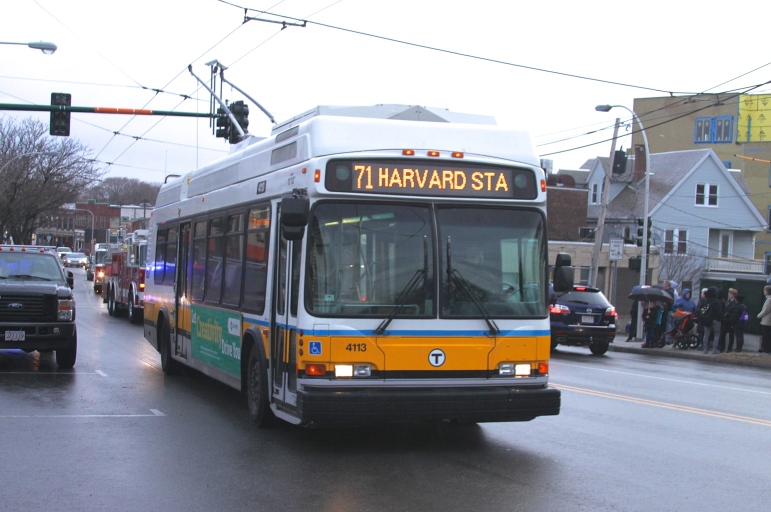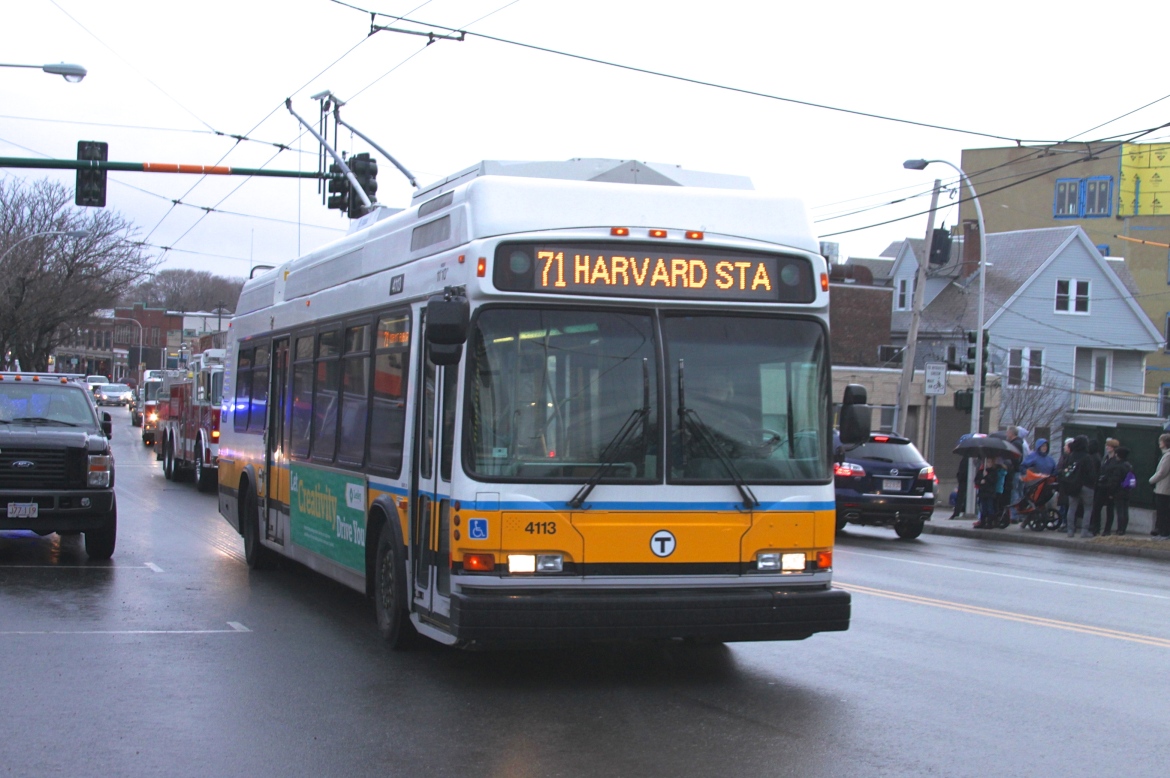
Charlie Breitrose
An MBTA bus in Watertown.
State Sen. Will Brownsberger, (D – Belmont) who represents Watertown, provided the following piece:
MBTA bus arrival predictions should get better as of today and further improvements can be expected over the next few months.
Representatives Jon Hecht and Dave Rogers and I learned a lot at a recent meeting with MBTA management about bus service complaints that we had received from riders.
Most regular bus riders now rely on mobile phone apps to get predictions of when the next bus will arrive. Here is how those predictions are generated and how the technology is changing.
Each MBTA bus is equipped with a device that transmits its location back to the MBTA’s control center. Currently buses send their position every 60 seconds over the MBTA’s data radio system. One improvement, expected by the end of the year, is a new cellular data location reporting system that will automatically report locations every 5 seconds instead of every minute.
The location updates are compiled into a continuous data feed which is transmitted in real time to an outside vendor who crunches the location data to create a stream of predictions as to when each bus will arrive at stops further down the route.
The vendor transmits this prediction feed back to the MBTA which makes publicly available a consolidated feed of locations and predictions.
Any software developer can read this location/prediction feed and use it to power a mobile app for transit users.
So, there are actually two different private companies involved in providing the predictions on the mobile phone. The company that users know is the company that creates the app on the phone. The MBTA does not license or otherwise control those apps and cannot take responsibility for them. The MBTA does, however, endorse one particular app called “Transit.” They endorsed it after a formal competition in 2016.
The other private company is the one that crunches the location data to make predictions. Predicting arrival times from locations is a complicated mathematical process and different companies use different proprietary algorithms.
The MBTA recently reprocured the prediction service. The MBTA technology staff competitively tested different vendor algorithms, allowing the vendors to demonstrate what predictions they would make from historical feeds of locations and comparing their predictions to actual results. The competition resulted in switch to a new vendor, Swiftly, who took over the prediction feed as of today.
Most riders understand that arrival projections for buses in traffic cannot always be accurate to the minute. But it is unacceptable when apps show a bus as arriving and it just never arrives. According to the MBTA’s technology people, the “ghost buses” should go away with the change to the new vendor.
The new prediction vendor promises transit systems to “DELIGHT PASSENGERS AND IMPROVE RIDERSHIP WITH THE MOST ACCURATE REAL-TIME INFORMATION”— we shall see how it goes.
Passengers who experience really inconvenient prediction errors should complain online or place a quick call to the MBTA’s service line: 617-222-3200. Provide the date, time and stop you were waiting at and the specifics of the prediction error. If possible, also provide the number of the bus that you ultimately were able to board — this allows more accurate analysis by bus operations.
If you ask for an explanation of the particular error, you are more likely to get one, but given that T buses make 450,000 stops per day, the analysts may not be able to account for every error. It’s still worth reporting so that they can recognize patterns of problems and try to get to their root.
We discussed other service issues like bunching at the recent meeting and I’ll report further on those after more follow-up.
